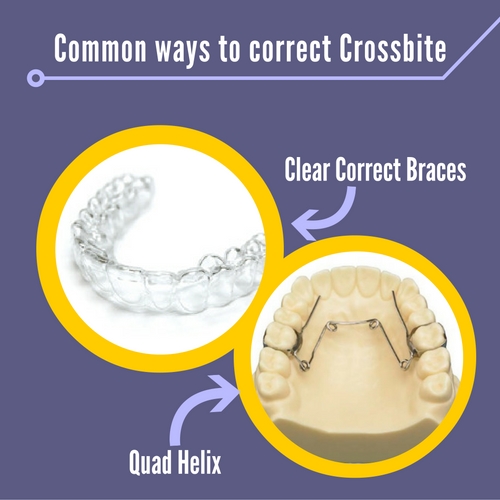Crossbite: Solving the Problem of the Antagonist Tooth
Crossbite is a condition that is not as easily noticed by some as an overbite, but still poses to the patient a dental misalignment of the arches. What happens to cause it is that some teeth are either closer to the cheek or tongue then their corresponding tooth in the lower dental arch.
This condition can involve a single tooth or cluster, and has a few different classifications. An anterior crossbite is also known as a negative overjet, and is characterized by teeth on the top of the mouth fitting in between the teeth on the bottom instead of them matching up.
The frustration here is that it’s not only uncomfortable, the crossbite can actually make it hard to chew food as well.
A Buccal Crossbite occurs when the upper teeth are too far towards the cheek, and the upper tooth misses its reach and doesn’t touch the biting surface of the tooth directly underneath it.
Crossbite can become structural if left untreated for a long time, and can eventually lead to skeletal asymmetries.
After teeth buds have been pointing in the wrong direction for awhile, crossbite occurs when there is simply not enough space for the tooth to protrude in its favored direction.
“A skeletal crossbite is often the result the upper and lower jaws developing disproportionally in relation to one another. Because the jaws do not align, the teeth may meet their opposing counterparts with the lower teeth in front of the upper teeth. In many cases, a skeletal crossbite is hereditary.
A dental crossbite is usually the result of delayed tooth eruption or crowding, allowing teeth not to align correctly with their opposing counterparts. Often some, but not all, of the teeth are in crossbite.”
What are some problems that crossbite causes?
When the jaw is misaligned, it can contribute to neck pain and headaches, and many who have a crossbite complain of migraines. Those that are not as concerned with how they look often think twice when head and neck pain becomes a problem.
Many patients who spend hours hovered over computers sometimes think that this is the cause of their pain, when it may be that as well as what is inflicted by a crossbite.
If a crossbite is not corrected, it can eventually lead to worn down teeth, occurrences of bone loss, and the onset of gum disease. When teeth become worn down over time, they are much quicker to become susceptible to developing cavities, and extreme tooth sensitivity.
You may notice this when having a glass of water, or morning coffee: it can give you a quick sting that soon forces you to move food around in your mouth to less sensitive teeth.
What are some common ways to correct crossbite?
After a walk in dentist and the formulation of a game plan to correct the crossbite, many use braces as a preferred method of fixing the problem. One common method is with ClearCorrect braces: they are not as easy to notice, and are constructed from plastic.
A mold is taken of your mouth, and then a comfortable fit is designed for optimum restructuring and riddance of the crossbite.
Since one of the root causes of a crossbite is overcrowding of the teeth, a dentist may recommend pulling certain teeth, and then using a method such as wire braces for correction.
One thing to keep in mind about braces is that it is not an incredibly quick or overnight fix: the process may take a period of years to achieve correctly.
When you arrive at the dentist that will help you, make sure to let them know about any jaw, head, or neck pain that you have been experiencing. Many patients can develop severe migraines right away, and this can also be in conjunction with a TMJ issue, or grinding of the teeth.
One method of treatment uses what is known as a Quad Helix that is loaded with a spring, for gradual correction. Especially in children that are still growing, this is a very good method of bringing the teeth back to an ideal state, and sometimes just takes about 6 months.
Is early detection important?
This is one of those unique issues where the dental community actually doesn’t agree wholeheartedly on when to take action. Some suggest that treatment should take place as early as age three, while other very competent professionals think that after a child’s molars have arrived is the time to solve it.
Crossbite is a fairly common occurrence, and some children that are over-pacified and suck their thumbs frequently find themselves with the conditions.
With the common correction from braces, many patients enjoy a better smile, ability to chew with much more ease, and lessen the frequency of neck pain and intense migraines.
Medically Fact-Checked & Written by Our Dental Editorial Team
You can read more about our editorial guidelines by clicking this link and learn more about the Emergency Dentists USA editorial team here.





